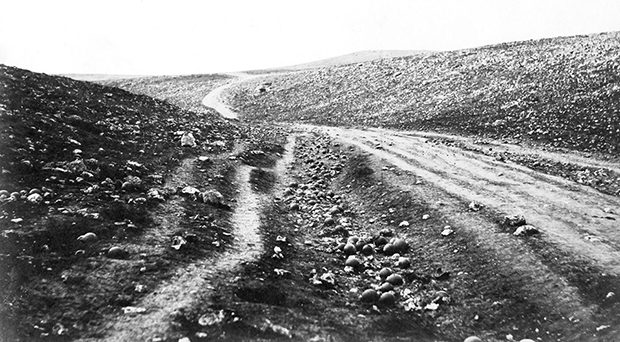The particular project I was to do here was to discuss conspiracy theories, what changes peoples opinions of events and how truth of an event changes over time. I happen to love the history of the Cold War, so I dived in to the most obvious controversy: Who Killed Kennedy?
Another
popular theory was that Lee Harvey Oswald killed John F. Kennedy on the behalf
of another entity. Throughout Kennedy’s presidency there were many groups of
people wanting him dead; the Soviets, the Mafia, Cubans, Chinese, even some
parts of the government that may have benefitted from an administration change,
all were contenders for Kennedy’s murder. This theory really seems to hold true
to people who had seen the murder and then became cynical about the American
government’s ability to tell the truth to the American people; actions in Laos,
Cambodia and Vietnam, government black writing, and scandals like Watergate all
would have promoted this line of thinking. There is also some speculation as to
what Oswald was doing in the Soviet Union for years, and whether or not this
represented a recruitment to assassinate the president. Also in the air is Jack
Ruby’s reason for killing Oswald; did Ruby do it to make sure that Oswald did
not escape justice or in order to cover the tracks of any organizations
involved?
One
of the other leading theories is that a group of people killed John F. Kennedy,
Lee Harvey Oswald may have been involved and that there were multiple shooters
in Dallas on the day in question. This theory is a more recent candidate that
had become available after much inspection of ballistics, acoustic evidence,
and eyewitness accounts and footage of the assassination. It provides evidence
that there were multiple shooters in Dallas firing from different locations.
This is a more scientific theory; the physics of Kennedy’s body as the bullets
hit him would suggest that the book depository may not be where it was fired
from, and that the grassy knoll location would be more logical according to
ballistics evidence. Directions of bullets and forensic evidence would support
the two-shooter theory as well as supporting the theory of other organizations
involved with the assassination.
On
November 22nd, 1963 John Fitzgerald Kennedy was killed while riding
his motorcade in Dallas; that is certain, its fact, and it changed the
direction that America was going to that point. Yet so little is known about
the motivations of Oswald or any other parties involved that what actually
happened may remain a mystery for quite some time. That time is something that
will only serve to help the rumors, however.
Immediately
after Kennedy’s death, the country wanted blood and not reasons, whether Oswald
was the killer or not made no difference as long as someone was given justice.
Lee Harvey Oswald was as easy a target to place blame for Kennedy’s death, as
the Middle East was to blame for 9-11. The people of the time were close enough
to the event that the only option seemed to be the most obvious; that Oswald
was the only candidate simply must mean that he killed Kennedy.
But
this was subject to change with other events following the assassination. The
American people would be very easy to believe the government in 1963; after all
it was built upon the administration Kennedy created. But if one looked at the
public opinion of a later government that gave them scandals like Watergate,
they would be much less trustworthy. A public that questions the government
about current events will eventually say “Hey, wait a minute, what else have
you lied to us about?”
But
just as the current audience perspective changes, the audience changes
themselves. Here in 2014, the majority of Americans would not have been alive
to remember the Kennedy Assassination; this means that many of the theories can
be examined with a different set of eyes than the generation previous. The
opinion of someone who is able to go on the Internet and research each of the
conspiracy theories surrounding the Kennedy assassination will probably be
different than someone who only had experience from hearing about the
assassination on the news and theorizing on their own. The end of Camelot was a
huge event that really doesn’t have as much of an emotional impact on today’s
people as those who were alive to see it; today’s youth didn’t know Kennedy,
they’d never seen him and not known that he was going to be killed, thus the
perspective shifts again.
Whether
this kind of change is for something like the Kennedy assassination or 9-11,
there will always be a change in opinions. These changes can be due to the
shifting perspectives of people as they learn more information or because a new
generation will have a different opinion of what happened. The only thing that
is certain is that this will continue to be true with every major event in
history; its only human nature to question given beliefs.
Sources and background information
The US National Archives and
Records Administration,
Bernard, S., “Story Basics,”
Documentary Storytelling: Making Stronger and More Dramatic Nonfiction Films,
pp. 15-31. 2007
Furthermore the book pictured is 11/22/63 by Stephen King and is not a non-fiction account of the events in the least but is rather a gallivanting time traveler novel that is based on the event, but don't let that turn you off, its a great read!
The comic is from the webcomic XKCD and you can find it here: http://xkcd.com/1093/
Furthermore the book pictured is 11/22/63 by Stephen King and is not a non-fiction account of the events in the least but is rather a gallivanting time traveler novel that is based on the event, but don't let that turn you off, its a great read!
The comic is from the webcomic XKCD and you can find it here: http://xkcd.com/1093/

